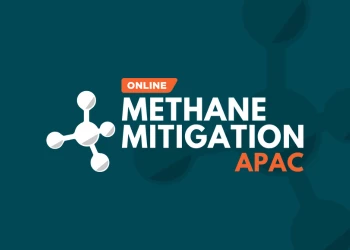“Feeding the Future” and Reducing Carbon Emissions at Nutrien
Add bookmark
Nitrogen is one of the basic building blocks of life. It’s in water, air, and soil. Nutrien is the third largest nitrogen producer in the world and says that this colorless element is critical to helping the world meet the global challenge of feeding what could be nearly 10 billion people by 2050.
Nutrien’s 23,000 employees develop the products that help farmers grow food in a sustainable way. Their four main operating segments – nitrogen, phosphate, potash, and retail - produced and distributed over 27 million tonnes of potash, nitrogen, and phosphate last year with retail sales of almost $15 billion (CAD). Their products play a key role in plant growth, animal feed and industrial products.
In this IX Network interview Ashley Harris, VP Environmental Performance and Innovation at Nutrien, explains how his company is tackling carbon reduction while continuing to innovate to ensure the world can meet its food production targets in the decades ahead.
Diana Davis, IX Network: What does ESG look like at Nutrien?
Ashley Harris, Nutrien: We put out some targets earlier this year and followed those up with our “feeding the future” plans. My role focuses on the greenhouse gas side of our upstream business; we set a target to reduce the carbon intensity of our operations by reducing the amount of carbon dioxide produced per ton of fertilizer by 30% by 2030. We also made a commitment to deploy renewables at up to four of our sites.
Diana Davis, IX Network: How do you achieve those targets? How do you get to the point where you're taking carbon out of the operation?
Ashley Harris, Nutrien: On the greenhouse gas side, my team looks at the opportunities and we rank them. We’ve created a carbon cost abatement curve so we can rank projects on those merits. There are also other economic benefits to some of these projects – more incentives to put them in place. We’ve ranked these opportunities and now we have a path that we will follow to 2030. Most of the projects are in the areas of carbon capture, utilization and storage, energy efficiency and deploying renewable energy sources.
Diana Davis, IX Network: How do you prioritize the initiatives? Is it based on what will reduce the most carbon? Is it what is most cost effective?
Ashley Harris, Nutrien: A bit of both. We've had some projects that are economically viable on the energy side. We’ve gone ahead with those. We’re in the middle of construction of a major project right now in Saskatchewan. But then we’ve also had some opportunities to abate nitrous oxide and we’ve gone ahead with those even thought there was no compliance requirement and there's no economic benefit. We intend to reduce emissions by the equivalent of about a million tonnes by 2023 in our nitric acid division alone.
Diana Davis, IX Network: So how do you measure success? How do you benchmark your carbon emissions?
Ashley Harris, Nutrien: We've gone off our baseline of carbon emissions of 2018. We built the capabilities so that we can forecast – to what degree of accuracy we will see – the impact of projects. We created a dynamic tool that we can use to gauge our own goals. We also benchmark against our peers; this is done through a lot of ESG scoring, so we've got visibility there too.
Diana Davis, IX Network: What's driving the push for ESG at your company? Is it driven by compliance?
Ashley Harris, Nutrien: I think it’s beyond compliance. That is certainly a component – and it varies from jurisdiction to jurisdiction. In Canada, for instance, we have a carbon tax, and they don’t in the US; there are differences we need to consider. But really, ESG is driven by our stakeholders. Our stakeholders – our investors, the communities we work with, and our employees - have told us that they want to see progress in this area. Management is fully supportive from my level all the way to the top and then I'm able to cascade that down very effectively.
Diana Davis, IX Network: Is there a connection between digital transformation and ESG? Does technology help with those goals?
Ashley Harris, Nutrien: I’m not sure I see that connection in my role in ESG, but I do see it in our retail business. Our retail business has launched a significant number of digital tools that are working on a digital interface for farmers. I think some of those tools will allow that data to be measured and verified against some form of positive carbon outcome. That's the objective the carbon program is trying to achieve to find a verifiable amount of CO2 that certain practices or group practices can achieve.
Diana Davis, IX Network: My final question, what is your focus in the year ahead? What’s the next big thing on your agenda?
Ashley Harris, Nutrien: It is the time of year to be thinking about that! I think for us we're going to see a lot of development involving low carbon ammonia next year. There has been a lot of announcements in the industry on low carbon, green ammonia, and green hydrogen. Not sure exactly how many of those are viable and feasible but I think we'll learn more about that as the next year goes on because there is a lot of momentum to look at hydrogen as a fuel and we think ammonia can play a role in that.



















